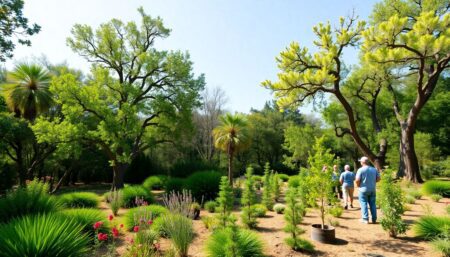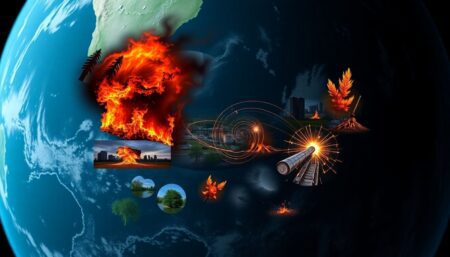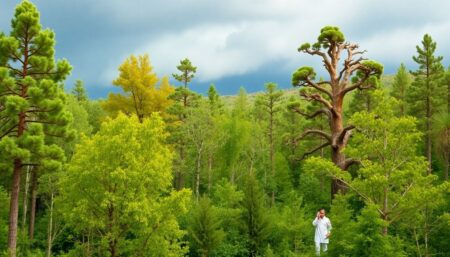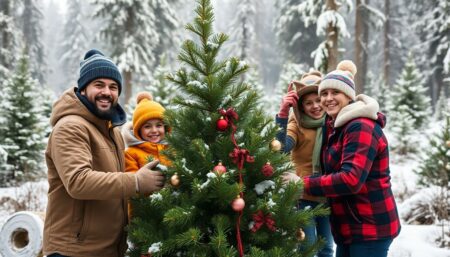Have you ever walked past a patch of greenery in the city and wondered if those leaves were safe to eat? Or perhaps you’ve seen a fruit tree laden with ripe produce, growing in the most unexpected urban setting? You’re not alone. Urban foraging, the practice of gathering wild edibles in urban environments, is a growing trend that’s turning city dwellers into modern-day gatherers. But is it safe? Is it legal? And where on earth do you start?
In this comprehensive guide, we’re going to delve into the fascinating world of urban foraging. We’ll explore the art and science of finding free food in the concrete jungle, from identifying wild edibles to understanding the legalities and safety aspects. By the end of this article, you’ll not only gain a newfound appreciation for the edible landscape around you, but you’ll also be equipped with the knowledge and confidence to start your own urban foraging adventures.
But first, let’s address the elephant in the room. Isn’t it a bit… risky? After all, we’re talking about eating plants that have grown in an environment filled with pollution and who knows what else. The truth is, with the right knowledge and precautions, urban foraging can be a safe and rewarding pursuit. According to a study by the University of California, Berkeley, many common urban plants are not only safe to eat but also packed with nutrients. In fact, some urban foragers have even found that city-grown produce can be more nutritious than its farm-grown counterparts due to higher levels of certain minerals.
Now, you might be thinking, ‘This all sounds great, but where do I start?’ That’s where this article comes in. We’ll begin by debunking some common myths about urban foraging and providing a brief history of this ancient practice. Then, we’ll dive into the nitty-gritty, from identifying common urban edibles to understanding the legalities and ethics of foraging in different cities. We’ll also provide practical tips on how to safely and sustainably forage in urban environments.
So, are you ready to transform your city into a pantry? To start seeing the urban landscape not just as concrete and steel, but as a potential source of free, fresh, and nutritious food? Then read on, dear forager, for the city’s bounty awaits!
Harvesting the City: A Guide to Urban Foraging for Free, Fresh Food
In the heart of the urban jungle, a hidden world of culinary delights awaits the intrepid forager. Welcome to the fascinating world of urban foraging, where the city’s concrete veins are lined with a rich tapestry of edible plants, just waiting to be discovered. Imagine strolling through your local park, not just admiring the greenery, but harvesting it for your dinner table. This is not a pipe dream, but a reality that’s gaining traction among eco-conscious city dwellers. From the humble dandelion to the mighty mulberry, the city’s wild spaces are teeming with free, fresh food that’s just begging to be picked. But before you don your foraging hat and grab your basket, it’s crucial to understand the art and science behind urban foraging. This guide will take you on a journey through the city’s wild side, teaching you how to identify, harvest, and prepare a variety of urban edibles. We’ll delve into the fascinating world of plant biology, discuss the ethics of foraging in urban environments, and provide practical tips on how to ensure your harvest is safe and sustainable. So, grab your guidebook and let’s embark on this delicious adventure. Who knows, you might just find that the city’s wild side is the tastiest place to be.
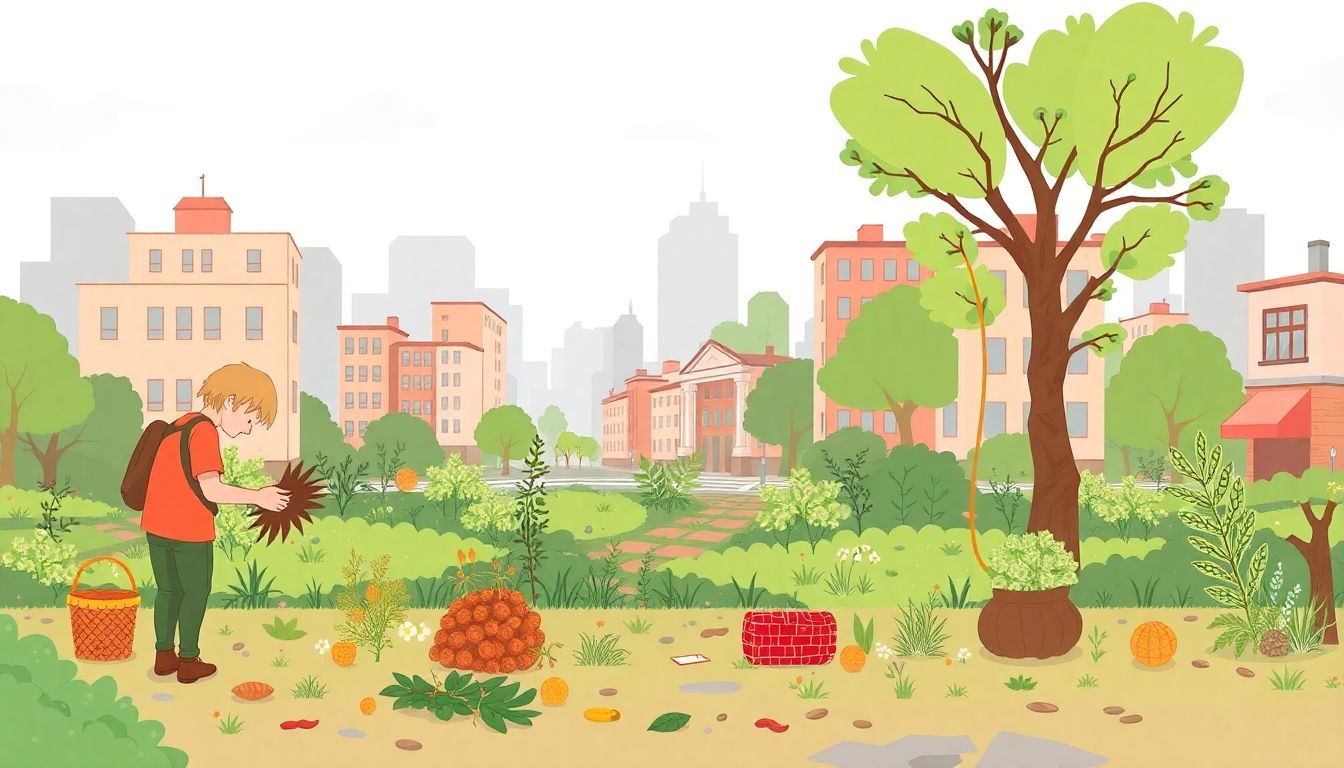
Introduction to Urban Foraging
Urban foraging, the practice of gathering wild, edible plants and mushrooms from one’s surroundings, is an increasingly popular activity in cities worldwide. It’s a unique blend of nature appreciation, culinary exploration, and sustainable living. By definition, urban foraging involves harvesting plants that grow naturally in urban environments, such as parks, gardens, and even sidewalk cracks. The benefits of urban foraging are manifold. It promotes a deeper connection with nature, encourages physical activity, and can lead to significant savings on grocery bills. Moreover, it fosters a sense of community among foragers, who often share their knowledge and bounty with others.
One of the most compelling reasons for the resurgence of urban foraging is its potential to combat ‘food deserts’
- areas where access to affordable, nutritious food is limited or nonexistent. In many cities, these deserts are often found in low-income neighborhoods, exacerbating health disparities. Urban foraging can help mitigate this issue by providing a source of fresh, free food. It also promotes self-sufficiency and can inspire a greater appreciation for local, seasonal produce.
Foraging is not a new concept. Humans have been gathering wild plants for food since the dawn of time. In fact, it was the primary means of sustenance for our ancestors. However, with the advent of agriculture and later, industrial food systems, foraging fell out of favor. It was seen as a practice of the past, a remnant of a bygone era. But in recent years, there’s been a resurgence of interest in foraging. This can be attributed to a variety of factors, including increased awareness of environmental issues, a growing interest in local, sustainable food, and a desire to reconnect with nature. Today, urban foraging clubs, workshops, and even apps are popping up in cities across the globe, making it easier than ever for people to learn about and participate in this ancient practice.

Understanding Wild Edibles
In the heart of our urban landscapes, a world of untapped culinary treasures awaits, known as wild edibles. These are plants that grow naturally in the wild, often found in our cities’ parks, gardens, and even along sidewalks. They are not only a testament to nature’s resilience but also a valuable resource for those interested in sustainable, locally sourced food. However, it’s crucial to approach this topic with caution, as not all wild plants are safe for consumption. Proper identification is key, and it’s essential to learn from reliable sources to avoid the risks associated with consuming misidentified plants.
To start your exploration, look for wild edibles in areas where plants are least likely to be contaminated by pollution or pesticides. Parks, community gardens, and even your own backyard can be a treasure trove. Some common urban wild edibles include dandelions, purslane, and plantain. Dandelions, often considered weeds, have edible leaves, flowers, and roots. Purslane, with its succulent leaves and stems, is a great source of omega-3 fatty acids. Plantain, a common lawn weed, has leaves that can be eaten raw or cooked.
Other wild edibles you might find in the city include clover, chickweed, and lamb’s quarters. Clover, with its trifoliate leaves, is edible and can be used in salads or as a tea. Chickweed, a small, delicate plant with tiny white flowers, is also edible and nutritious. Lamb’s quarters, a relative of spinach, has edible leaves that can be cooked like spinach.
Remember, when it comes to wild edibles, the golden rule is ‘when in doubt, leave it out.’ Always be absolutely sure of your identification before consuming any wild plant. It’s also a good idea to start with small amounts to check for any allergic reactions. With proper identification and respect for nature, exploring the world of wild edibles can be a rewarding and delicious adventure.

Identifying Safe Foraging Spots
In the urban jungle, the allure of foraging for fresh, wild ingredients can be irresistible. However, it’s crucial to choose safe foraging spots in the city to ensure the food you gather is not only delicious but also safe to consume. The importance of this cannot be overstated, as the cityscape presents unique challenges that can contaminate potential food sources.
Firstly, it’s essential to identify potential hazards. Pollution, both air and soil, can accumulate in urban areas, making plants and mushrooms unsafe to eat. Pesticides and herbicides used in public spaces and private gardens can also linger, posing a risk to foragers. Heavy traffic can lead to increased levels of lead and other toxins in plants growing along roadsides. Therefore, it’s wise to avoid foraging within a 100-foot radius of busy roads.
To find clean, safe foraging spots, consider the following tips. Parks and community gardens are often well-maintained and less likely to have been treated with pesticides. However, it’s always a good idea to ask the gardeners or park management about their maintenance practices. Abandoned lots can be treasure troves of wild edibles, but they may also harbor hidden hazards like broken glass or contaminated soil. Always wear gloves and a long-sleeved shirt when foraging in such areas.
Another approach is to look for areas that are less likely to be contaminated. These can include school grounds, churchyards, and other public spaces that are well-maintained but less likely to be treated with chemicals. Always remember to respect private property and only forage where you have permission.
Lastly, it’s a good idea to educate yourself about the plants and mushrooms in your area. This will help you identify safe, edible species and avoid potentially poisonous ones. Joining local foraging groups or attending workshops can be a great way to learn and connect with other foragers. By following these guidelines, you can safely enjoy the bounty of the urban wild.

The Art of Identification
The art of identification, when it comes to urban foraging, is not just a hobby or a skill, but a crucial tool for survival and sustainability in the modern world. Proper plant identification is the first step in responsibly harvesting wild plants, ensuring that we are consuming safe, edible, and often medicinal species, while leaving the ecosystem unharmed. In the concrete jungles of our cities, it’s easy to overlook the wealth of plant life that surrounds us, but with a little knowledge and the right tools, we can transform our urban environments into lush pantries. Field guides, apps, and online resources have democratized the process of plant identification, making it accessible to everyone, regardless of their level of expertise. Books like ‘Edible Wild Plants: A North American Field Guide to Over 200 Natural Foods’ by Thomas S. Elias and Peter A. Dykeman, or apps such as ‘iNaturalist’ and ‘PlantSnap’, offer detailed descriptions, illustrations, and even photographs of various plant species. Online platforms like the United States Department of Agriculture’s (USDA) Plants Database provide extensive information on plant identification, distribution, and uses. However, while these tools are invaluable, they should be used with caution. It’s essential to remember that no identification tool can replace hands-on experience and a keen eye. Always cross-reference your findings with multiple sources, and when in doubt, err on the side of caution. It’s better to leave a plant unidentified than to consume or harvest one that could be harmful. When it comes to harvesting wild plants, there are several guidelines to follow. Firstly, always ensure that you have permission to forage on the land. Secondly, never over-harvest. A general rule of thumb is to take no more than a quarter of what you find, and never take the entire plant if it’s rare or endangered. Lastly, always be mindful of the environment. Avoid trampling plants or disturbing the soil, and consider leaving some plants to flower and set seed. In conclusion, the art of identification is not just about knowing the names of plants, but about understanding their roles in the ecosystem, their uses, and their limits. It’s about respecting the plants and the land, and about cultivating a sense of responsibility and stewardship towards our urban green spaces. So, grab your field guide, download your app, and get out there. The urban jungle is waiting to be explored, one plant at a time.
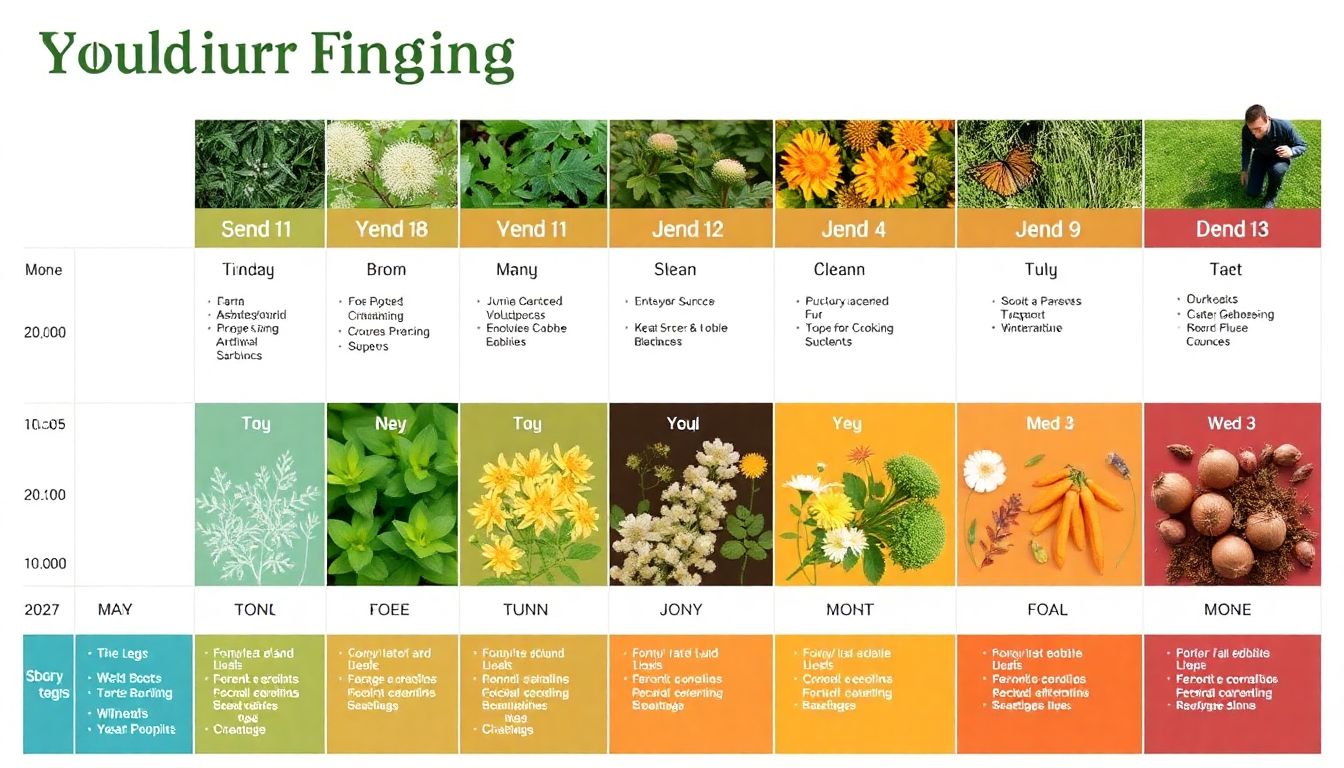
Foraging in Different Seasons
Urban foraging, the practice of gathering wild plants for food or medicine, is a fascinating and sustainable way to connect with nature in the city. However, it’s crucial to understand that seasonality plays a significant role in this endeavor. Each season brings a unique bounty of wild edibles, and knowing what’s in season can help you make the most of your foraging expeditions. Let’s explore the impact of seasonality on urban foraging and delve into some delicious recipes and preservation tips for each season.
In the spring, the city wakes up with a burst of greenery, and so do the wild edibles. This season is all about tender, young growth. Dandelions, stinging nettles, and garlic mustard are some of the first plants to emerge. Dandelion greens can be sautéed like spinach, while stinging nettles make a delicious pesto when blended with garlic, Parmesan, and olive oil. Garlic mustard, with its peppery flavor, is perfect for adding a zing to salads. To preserve these spring delights, consider making pesto or pickling the greens.
Summer brings a wealth of fruits and berries. Wild blackberries, raspberries, and mulberries are ripe for the picking. These can be enjoyed fresh, made into jams, or used in desserts like cobblers or crisps. Summer is also the time for wild herbs like lemon balm and mint. They can be brewed into refreshing teas or used to make herbal infusions for cocktails. To preserve summer’s bounty, consider making jam, drying herbs, or freezing berries.
Autumn is the season of mushrooms. While it’s important to be cautious when foraging mushrooms due to the presence of poisonous varieties, those with knowledge can find a treasure trove of edible species. Chanterelles, morels, and porcini are just a few examples. Mushrooms can be sautéed, added to soups, or dried for later use. Autumn also brings an abundance of nuts and seeds. Acorns can be leached to make flour, while black walnuts can be used to make a delicious pesto. To preserve autumn’s harvest, consider drying mushrooms, making nut butters, or storing nuts in the freezer.
Lastly, winter might seem like a barren time for foraging, but there are still wild edibles to be found. Evergreen plants like pine and cedar provide needles that can be used to make tea or infused into vinegar. Burdock roots can be dug up and used like potatoes, while wintercress provides a peppery green in salads. To preserve winter’s harvest, consider making pine-infused vinegar or pickling wintercress.
In conclusion, understanding the impact of seasonality on urban foraging is key to making the most of the wild edibles that grow in our cities. Each season brings a unique opportunity to connect with nature and enjoy the delicious, sustainable food it provides. So, get out there and start foraging!

Urban Foraging Laws and Ethics
Urban foraging, the practice of gathering wild plants and mushrooms for food or other uses, is a growing trend in cities worldwide. However, it’s crucial to understand the legal considerations and ethical guidelines to ensure this activity remains sustainable and respectful.
Firstly, let’s delve into the legal aspects. Laws governing urban foraging vary greatly depending on your location. In some cities, foraging is explicitly allowed, while in others, it’s prohibited or requires permits. For instance, in the United States, foraging is generally allowed on public lands, but not in national parks or protected areas. Always check local, state, and federal laws, as well as any city-specific ordinances.
Ethics play a significant role in urban foraging. The most fundamental principle is to ‘take only what you need’ and ‘leave enough for wildlife’. This ensures that the ecosystem remains balanced and that other creatures can also benefit from the plants. It’s also crucial to avoid foraging in protected areas, such as nature reserves or areas marked as ‘no foraging’.
To forage responsibly and sustainably, consider the following tips:
- Educate yourself about the plants you’re foraging. Ensure you’re 100% certain of a plant’s identification before consuming it.
- Observe the ‘one-third rule’. This means you should only take one-third of what you find, leaving two-thirds for wildlife and the plant’s reproduction.
- Avoid foraging in areas that have been treated with pesticides or are contaminated.
- Respect private property. Always ask for permission before foraging on private land.
- Clean up after yourself. Leave the area as you found it, or even better, remove any litter you find.
By following these guidelines, we can all enjoy the benefits of urban foraging while ensuring its long-term sustainability.

Cooking with Foraged Ingredients
Embarking on a culinary adventure with foraged ingredients not only adds a unique twist to your dishes but also infuses them with a wealth of nutritional benefits. Dandelion wine, for instance, is a delightful way to harness the power of dandelions, which are packed with vitamins A, C, and K, as well as antioxidants. To make this refreshing beverage, simply collect dandelion flowers, remove the green parts, and let them steep in water with sugar and yeast for about a week. Once fermented, you can bottle and age the wine for a taste of nature’s sweet nectar.
Purslane, often dismissed as a weed, is a treasure trove of omega-3 fatty acids, making it an excellent addition to your diet. Transform this humble plant into a vibrant pesto by blending it with garlic, parmesan, and olive oil. This versatile sauce can elevate pasta dishes, sandwiches, or even as a dip for crudités.
Acorn flour, derived from the ground kernels of acorns, is a gluten-free alternative that’s rich in fiber and protein. To create acorn flour pancakes, first leach the tannins from the acorns by soaking and rinsing them repeatedly. Then, grind the acorns into a fine flour and incorporate it into your pancake batter. The result is a hearty, earthy pancake that’s perfect for a rustic breakfast.
Incorporating wild edibles into your diet not only expands your culinary horizons but also provides a wide array of health benefits. These plants are often more nutrient-dense than their cultivated counterparts and can help boost your immune system, improve digestion, and even lower cholesterol.
To store and preserve foraged ingredients, follow these steps:
- Clean and dry your foraged ingredients thoroughly to remove any dirt or debris.
- For leaves and flowers, spread them out on a clean towel or dehydrator tray and dry at a low temperature until crisp. Store in an airtight container in a cool, dark place.
- For roots and tubers, scrub clean, peel if necessary, and slice or dice before drying. Dehydrate at a low temperature until leathery, then store in an airtight container.
- For fruits and berries, wash and dry thoroughly, then freeze on a baking sheet before transferring to an airtight container. This prevents them from clumping together.

Building a Community of Foragers
In the heart of our bustling cities, a unique and rewarding pastime is gaining traction: urban foraging. This practice, once a niche activity, is now blossoming into vibrant communities, offering a plethora of benefits. Firstly, it fosters a deeper connection with nature, transforming concrete jungles into lush, edible landscapes. Secondly, it promotes sustainability by reducing our carbon footprint and encouraging a more mindful approach to food consumption. Lastly, it cultivates a sense of community, bringing together like-minded individuals who share a passion for the great outdoors, even in the most urban of settings.
So, how does one embark on this journey of building a community of urban foragers? The digital age has made it easier than ever to connect with others who share this interest. Social media platforms, particularly Facebook and Instagram, host numerous groups dedicated to urban foraging. Here, you can find local foragers sharing their finds, asking questions, and offering advice. Joining these groups is as simple as a click of a button.
For a more hands-on approach, foraging clubs and workshops are excellent resources. These groups often organize group forages, providing a safe and educational environment to learn the craft. They also offer a sense of camaraderie, with members often forming lasting friendships. To find these groups, a simple online search should suffice, or you could ask around in local gardening or environmental groups.
Teaching others about urban foraging is not only rewarding but also crucial for the growth and sustainability of these communities. Here are some tips to help you share your knowledge:
- Start with the basics. Beginner foragers should first learn how to identify common edible plants, such as dandelions, clovers, and plantains.
- Safety first. Always emphasize the importance of proper identification and the avoidance of poisonous plants.
- Share resources. Recommend books, websites, and apps that have helped you in your foraging journey.
- Organize workshops or group forages. This hands-on approach allows others to learn by doing.
- Be patient and encouraging. Everyone learns at their own pace, so be patient and offer encouragement.
By following these steps and fostering a supportive environment, you can help build a thriving community of urban foragers in your city.

Urban Foraging for Survival: Emergency Food Sources
In the face of natural disasters or economic crises, urban foraging can be a lifesaving skill, providing access to emergency food sources when traditional supply chains are disrupted. This ancient practice, often dismissed as a quaint hobby, takes on a new significance in times of need. However, it’s crucial to approach urban foraging with caution and respect, ensuring the safety and sustainability of both the forager and the environment.
One of the first steps in urban foraging is to identify potential food sources. Acorns, for instance, are abundant in many urban parks and can be ground into flour for baking. However, it’s essential to know that acorns contain tannins, which must be leached out before consumption. This can be done by soaking the acorns in several changes of water over a few days. Pine needles, another common urban plant, can be brewed into a tea rich in vitamin C, a valuable immune booster in times of stress.
Invasive species, often reviled for their ecological impact, can also serve as valuable food sources. For example, Japanese knotweed, while invasive, is edible and can be cooked like rhubarb. However, it’s crucial to ensure that any invasive species you consume are indeed edible and not toxic. Always double-check with reliable sources and, if possible, consult with an expert.
Once you’ve identified and harvested your emergency food sources, it’s important to preserve and store them properly. Acorn flour can be stored in airtight containers in a cool, dry place. Pine needle tea can be dried and stored for later use. Invasive species can be cooked and canned, following proper food safety guidelines. Remember, in an emergency situation, it’s not just about finding food, but also about maintaining a safe and healthy diet.
Urban foraging is not just about survival, but also about resilience and adaptability. It’s about learning to live in harmony with our environment, using its resources sustainably and respectfully. In times of crisis, it can be a lifeline, a reminder that even in the most challenging circumstances, there is sustenance to be found, if we know where to look.
FAQ
What is urban foraging and why is it gaining popularity?
Are there really wild edibles in cities? What kind?
How do I start urban foraging? What tools do I need?
What are some urban foraging safety tips?
- Never consume a plant unless you are 100% sure of its identification. If you’re unsure, leave it be.
- Avoid foraging in areas that may be contaminated, such as along highways, in industrial zones, or where pesticides/herbicides are used.
- Be aware of local laws and regulations regarding foraging. Some cities have restrictions on what you can harvest and where.
- Always wash your finds thoroughly before consuming to remove any dirt, pollen, or potential pollutants.
- Start with a small amount of any new wild food to check for any adverse reactions.
How can I preserve my urban foraged finds?
- Drying: Many plants, like herbs and mushrooms, can be dried for later use. Simply spread them out on a clean surface and let them air dry, or use a dehydrator.
- Freezing: Berries and other fruits can be frozen for later use in smoothies, jams, or baked goods. Simply wash, dry, and freeze on a baking sheet before transferring to an airtight container.
- Fermenting: Some plants, like dandelions, can be fermented to make probiotic-rich foods like kvass or kombucha.
- Pickling: Vegetables like purslane can be pickled for long-term storage.
Can urban foraging be a sustainable source of food?
How can I get involved in the urban foraging community?
- Join local foraging groups on social media platforms like Facebook or Meetup. These groups often organize group forages and share knowledge and resources.
- Attend workshops and classes taught by experienced foragers. These can provide hands-on learning and the opportunity to connect with others.
- Volunteer with local urban agriculture or environmental organizations. These groups often have a wealth of knowledge about local wild edibles and can provide opportunities to learn and contribute.
- Start your own blog or podcast about urban foraging to share your experiences and connect with others.




